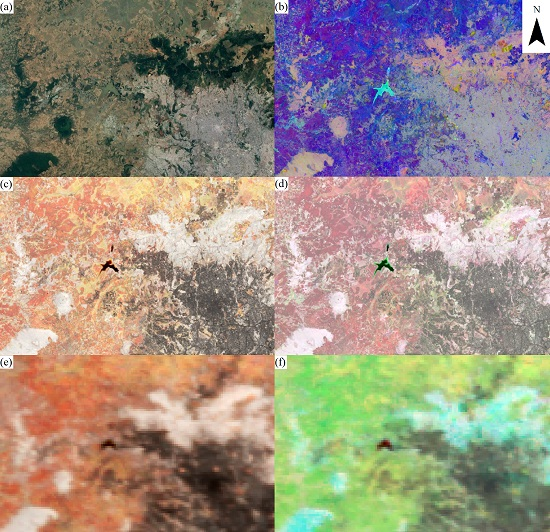
KHATAMI, MUIR, SOUTHWORTH – Operational Large-Area Land-Cover Mapping: An Ethiopia Case Study
Reza Khatami, Jane Southworth, Carly Muir, Trevor Caughlin, Alemayehu N. Ayana, Daniel G. Brown, Chuan Liao, and Arun Agrawal
Article first published online: 16 MAR 2020 Remote Sensing
DOI: 10.3390/rs12060954
ABSTRACT: Knowledge of land cover and land use nationally is a prerequisite of many studies on drivers of land change, impacts on climate, carbon storage and other ecosystem services, and allows for sufficient planning and management. Despite this, many regions globally do not have accurate and consistent coverage at the national scale. This is certainly true for Ethiopia. Large-area land-cover characterization (LALCC), at a national scale is thus an essential first step in many studies of land-cover change, and yet is itself problematic. Such LALCC based on remote-sensing image classification is associated with a spectrum of technical challenges such as data availability, radiometric inconsistencies within/between images, and big data processing. Radiometric inconsistencies could be exacerbated for areas, such as Ethiopia, with a high frequency of cloud cover, diverse ecosystem and climate patterns, and large variations in elevation and topography. Obtaining explanatory variables that are more robust can improve classification accuracy. To create a base map for the future study of large-scale agricultural land transactions, we produced a recent land-cover map of Ethiopia. Of key importance was the creation of a methodology that was accurate and repeatable and, as such, could be used to create earlier, comparable land-cover classifications in the future for the same region. We examined the effects of band normalization and different time-series image compositing methods on classification accuracy. Both top of atmosphere and surface reflectance products from the Landsat 8 Operational Land Imager (OLI) were tested for single-time classification independently, where the latter resulted in 1.1% greater classification overall accuracy. Substitution of the original spectral bands with normalized difference spectral indices resulted in an additional improvement of 1.0% in overall accuracy. Three approaches for multi-temporal image compositing, using Landsat 8 OLI and Moderate Resolution Imaging Spectroradiometer (MODIS) data, were tested including sequential compositing, i.e., per-pixel summary measures based on predefined periods, probability density function compositing, i.e., per-pixel characterization of distribution of spectral values, and per-pixel sinusoidal models. Multi-temporal composites improved classification overall accuracy up to 4.1%, with respect to single-time classification with an advantage of the Landsat OLI-driven composites over MODIS-driven composites. Additionally, night-time light and elevation data were used to improve the classification. The elevation data and its derivatives improved classification accuracy by 1.7%. The night-time light data improve producer’s accuracy of the Urban/Built class with the cost of decreasing its user’s accuracy. Results from this research can aid map producers with decisions related to operational large-area land-cover mapping, especially with selecting input explanatory variables and multi-temporal image compositing, to allow for the creation of accurate and repeatable national-level land-cover products in a timely fashion.
Read the full publication at Remote Sensing.